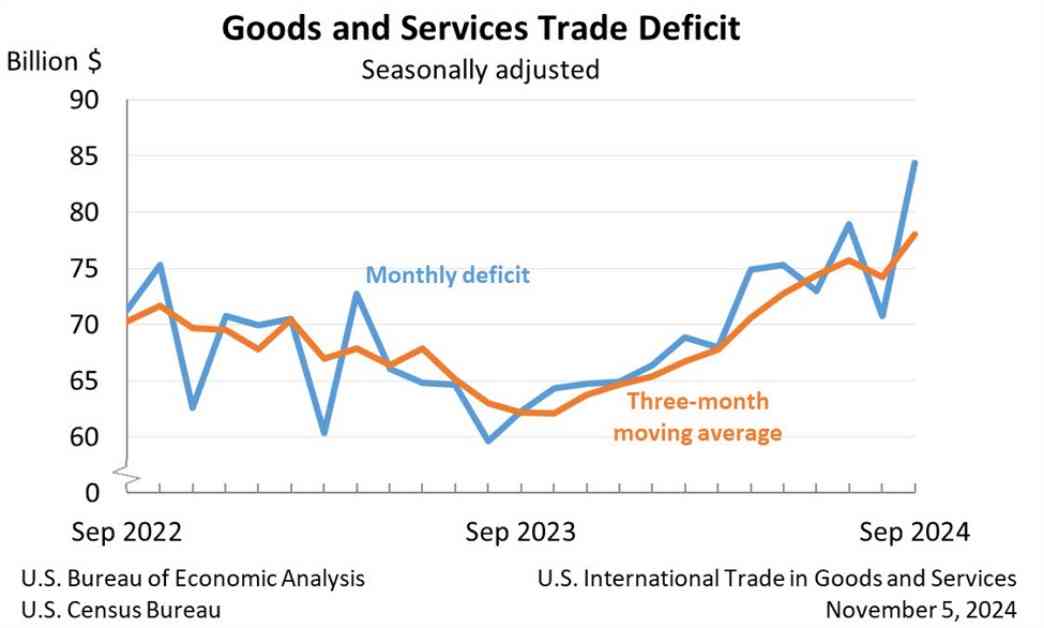In September, the US trade deficit widened slightly to $84.4 billion, compared to the prior deficit of $70.4 billion. The increase in the deficit was primarily driven by a rush to import items ahead of a feared port strike, resulting in the highest deficit since 2022.
Key details of the trade deficit widening include a decrease in exports by 1.2%, with declining civilian aircraft shipments contributing to a loss of $1.7 billion. Additionally, pharmaceutical prep exports dropped by $2.0 billion, and crude oil exports declined by $1.3 billion.
On the import side, consumer goods saw a significant increase of $4.0 billion, while capital goods imports rose by $2.8 billion. The rise in capital goods imports was led by computers, which increased by $1.0 billion, and semiconductors, which increased by $0.8 billion. Auto imports also saw an increase of $1.2 billion, with passenger cars specifically up by $0.9 billion.
Overall, the trade deficit widening in September reflects the complex dynamics of international trade and the impact of various factors on the US economy. The increase in imports may indicate strong domestic demand for goods, while the decrease in exports highlights challenges faced by certain industries in accessing foreign markets.
Looking ahead, it will be important for policymakers and businesses to closely monitor trade trends and developments to ensure a balanced and sustainable trade environment. Addressing the underlying issues contributing to the trade deficit will be key to promoting long-term economic growth and stability.

















